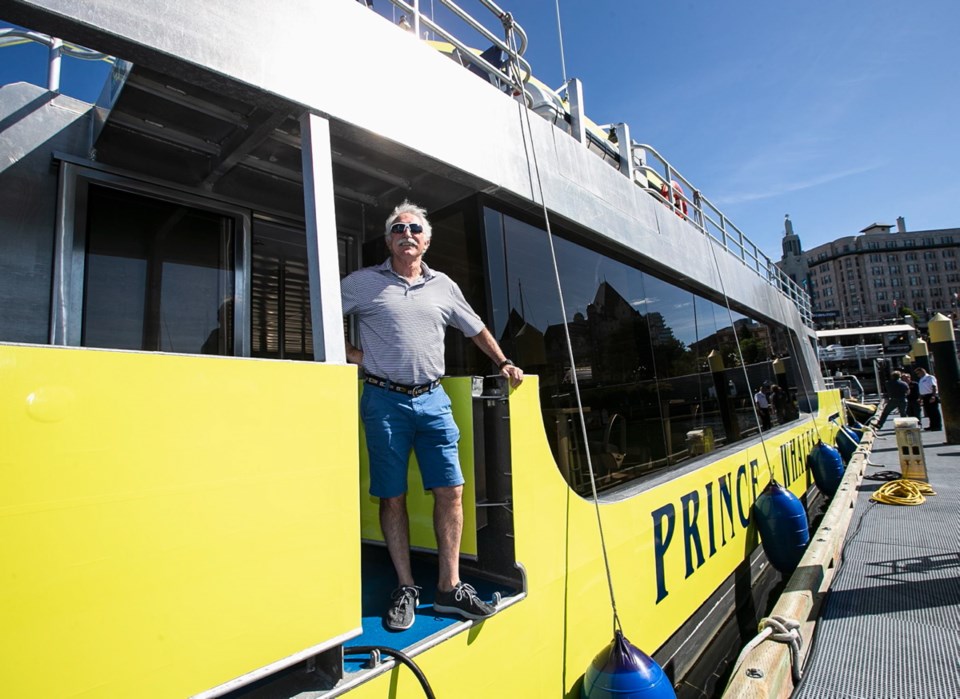While it’s too early to tell what effect new federal regulations will have on the whale-watching industry and the southern resident orca population it aims to protect, one operator is decidedly bullish on the prospects.
Prince of Whales president Alan McGillivray, who this year took delivery of the company’s second $3.5-million catamaran for his adventure-tour business, said a third is being constructed in North Vancouver with the expectation he will take delivery next spring.
The 80-foot vessels, which can carry 95 people, are billed as being more environmentally friendly in terms of engine noise and offer greater range for wildlife viewing.
“I see lots of opportunity out there, but I can only gently grow — one vessel at a time,” said McGillivray.
The whale-watching industry has been operating under stricter federal regulations since June 1. They include new sanctuaries, closing a number of salmon fisheries and doubling the no-go zone around the whales for recreational vessels and whale-watching boats. The mandatory no-go zone around killer whales has been doubled to 400 metres for all vessels. It was doubled last year to 200 metres.
Some whale-watching companies, including members of the Pacific Whale Watch Association, will be permitted to get as close as 200 metres to transient killer whales, but like all other vessels will have to stay back 400 metres from the resident orcas.
The southern resident killer whale population is under stress due to lack of food, with experts estimating there are only 75 of them left.
McGillivray said so far this year the new regulations haven’t meant much as the southern resident population has not yet been seen in the Salish Sea and most operators in this region spend their time watching transients.
He said with the surprising increase in humpback whale activity and an increase in transient orca activity, their business has not skipped a beat.
“It’s given us a tremendous opportunity to not focus on the southern resident killer whales because we have other species to look at,” he said. “There has been a fantastic run of success watching other animals.”
He estimates the number of Prince of Whales customers is up 25 per cent so far this year compared with 2018.
“The dollar is in a great place, as it was last year at 75 cents, and as much as there is going to be environmental suffering as a result, the lack of rain certainly does work magic for tourism, especially marine tourism,” he said.
Kelley Balcomb-Bartok, communications director for the Pacific Whale Watch Association, said the new regulations have been in the works for a while with operators paying heed to no-go zones, which he believes has already had an effect on the water. “But we are going to have to wait and see what [the new rules] mean going forward,” he said. “These captains and owners want to, and do the right thing; they are passionate about the whales.”
McGillivray, who has a fleet of 15 vessels split between Victoria, Vancouver and Telegraph Cove, is looking at business possibilities beyond whale watching.
He has been considering using the new catamarans to establish a transportation business between destinations, resorts and attractions around islands and up the Inside Passage.
But that would take more vessels and more time.
“I can only grow one boat at a time,” he said. “I am looking at other locations and other routes.”
That includes routes between the north Island and Seattle, with several stops in between.
“We have a fabulous platform [with the catamaran] and there are some great places on the coast where a vessel like this could be put to use,” he said.



